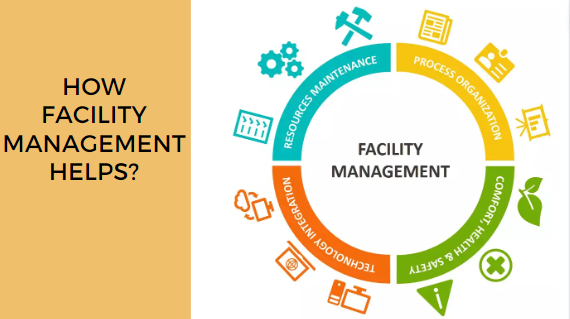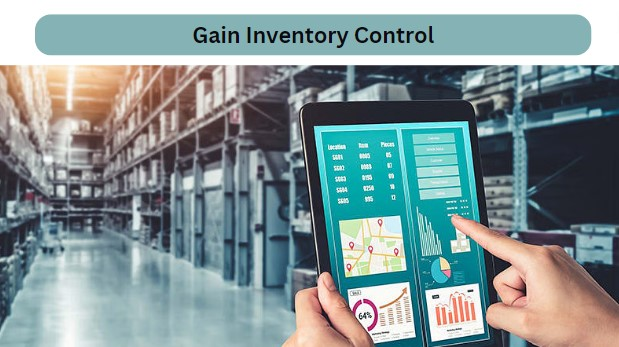
7 reasons to use the Facilities Management Software
Viki Dongare |
10 Jan 2024 |
10:52 AM
- Defining Facility Management Software
- Understanding the Role of Facility Management in Business Operations
- Key Benefits of Utilizing Facility Management Software
- Optimizing Operations with Parts & Inventory Management
- Understanding Preventive Maintenance and Its Significance
- The Top Benefits of Computerized Maintenance Management Software (CMMS)
- Facilities Management: Importance and Function
- Conclusion

10 Key Benefits of Enterprise Asset Management Software
Shubham Vakharia 13 May 2024 | 10:24 AMDiscover the power of Enterprise Asset Management (EAM). Save costs, boost efficiency, and make informed decisions. EAM works for various industries. Get started today! ...
Introduction to Facility Management Software
Facility Management Software (FMS) revolutionizes the way businesses oversee and manage their facilities. But what exactly is Facility Management Software, and how does it shape the operational landscape of enterprises?
Defining Facility Management Software
At its core, Facility Management Software encompasses a suite of tools designed to streamline and optimize various aspects of facility management. It integrates diverse functionalities like asset tracking, preventive maintenance, and IoT remote monitoring into a centralized platform. This allows facility managers to efficiently oversee operations, monitor performance metrics, and address maintenance needs proactively.
Understanding the Role of Facility Management in Business Operations
Facility management plays a pivotal role in ensuring the seamless functioning of an organization. It involves overseeing a broad spectrum of tasks, including maintenance costs, space utilization, maintenance tasks and resource management. Efficient facility management not only enhances the physical work environment but also contributes significantly to employee productivity and satisfaction. By leveraging Facility Management Software, businesses gain a clear overview of their facilities, enabling informed decision-making and resource allocation.

Facility Management Software acts as a strategic tool, enabling facility managers to optimize space, manage resources effectively, and ensure regulatory compliance with industry standards. Its integration into daily operations empowers businesses to proactively address issues, thereby minimizing downtime.
This software isn't just a convenience—it's a necessity in today's competitive landscape, offering tangible benefits that transcend mere maintenance tasks. From improved operational productivity to seamless communication and maintenance, the role of Facility Management Software is irrefutable in driving business success.
Incorporating such a system not only streamlines day-to-day operations but also positions businesses for growth and adaptability in an ever-evolving market landscape.
Key Benefits of Utilizing Facility Management Software
7 Reasons Explained:
Improved Efficiency levels: Efficiency is the backbone of any successful operation. Facility Management Software streamlines routine tasks, automates workflows, and minimizes manual errors. It provides real-time insights into operational processes, empowering teams to manage workflows, allocate resources effectively, and address inefficiencies promptly.

Cost Savings: Implementing Facility Management Software leads to substantial cost savings. It save time by enhancing asset tracking management, preventing unexpected breakdowns through predictive maintenance, and optimizing resource allocation, businesses significantly reduce operational costs and avoid unnecessary expenditures.
Streamlined Communication: Clear and efficient communication is fundamental in any organization. Facility Management Software acts as a centralized data hub, facilitating seamless communication between stakeholders, team members, and external service providers. It ensures that everyone is on the same page, enhancing collaboration and decision-making.

Better Asset Management: Maximizing the lifespan and equipment performance is a cornerstone of Facility Management Software. By tracking asset health, scheduling routine maintenance, and identifying underutilized assets, FMS ensures optimal asset performance, reduce maintenance costs, downtime and maximizes ROI.

Increased Productivity: Facility management empowers teams to work smarter, not harder. By automating repetitive tasks, simplifying processes, and providing actionable insights, employees can focus on value-added activities, driving productivity across the board.
IoT Remote Monitoring: Internet of Things (IoT) integration in facilities management software enables remote monitoring of facilities. Through sensors and smart devices, managers gain real-time data on facility performance, allowing for proactive decision-making and swift response to potential issues.

Enhanced Tenant Experience: For businesses managing properties, Facility management software plays a crucial role in tenant satisfaction. It enables better space management, timely issue resolution, and improved service delivery, ensuring a positive tenant experience.
Embracing Facility Management Software isn't merely a technological upgrade; it's a strategic investment in the long-term success of your operations. Its multifaceted benefits pave the way for enhanced efficiency, reduced costs, and a streamlined workflow, positioning your business for sustained growth.
Optimizing Operations with Parts & Inventory Management
Efficient Parts and Inventory Management serves as the backbone of streamlined operations. In today's dynamic business landscape, utilizing specialized software for stock optimization is more than just a competitive advantage—it's a necessity.

Importance of Efficient Parts and Inventory Management software
Effective management ensures seamless production, timely maintenance, and meets the demands of customers without stockouts or overstock situations. It not only minimizes holding costs but also prevents potential disruptions in the supply chain, fostering reliability and customer satisfaction.
Utilizing Software for Inventory Optimization
The introduction of specialized software solutions has transformed traditional inventory management practices. Such software leverages data analytics and predictive algorithms to optimize stock levels, streamline procurement processes, improve space management and forecast demand accurately. This translates to reduced excess inventory, minimized waste, and drive efficiency throughout the supply chain.

Facility Management Software (FMS) incorporates robust inventory management features that empower businesses to optimize stock levels intelligently. It allows for real-time monitoring, automated reorder points, and comprehensive reporting, providing insights to make informed decisions swiftly. By embracing these software solutions, businesses gain a competitive edge by aligning stock with actual demand, reducing carrying costs, and ensuring timely availability of resources.
Adopting software-driven inventory management isn't just a modern convenience—it's a strategic move toward operational excellence. It streamlines processes, mitigates risks associated with stock management, and ultimately drives profitability through efficient resource utilization.
Understanding Preventive Maintenance and Its Significance
Exploring Preventive Maintenance Tasks in Facilities Management
Preventive maintenance refers to a proactive approach aimed at averting potential breakdowns or issues before they occur. It involves systematic inspections, regular servicing, and predictive upkeep of business assets. This strategy not only extends the lifespan of machinery but also curtails unexpected downtimes, reducing operational costs significantly.

Facilities Management relies heavily on proactive maintenance to optimize asset performance and mitigate risks. By conducting routine check-ups, identifying potential faults, and taking timely corrective actions, organizations can maintain a smooth workflow, enhance safety, and uphold the integrity of critical infrastructure.
Implementing Preventive Maintenance Strategies via Software Solutions
The integration of sophisticated software solutions revolutionizes preventive maintenance practices. These tools streamline the entire process by automating maintenance schedules, providing predictive analytics, and generating actionable insights. Facilities Management Software (FMS) allows for centralized monitoring, triggers maintenance alerts based on predefined thresholds, and facilitates data-driven decisions.

Implementing maintenance strategies through software solutions transcends traditional reactive approaches. It enables the creation of detailed maintenance schedules, tracks historical maintenance data, and offers predictive models for optimized maintenance cycles. Such advancements empower facilities managers to allocate resources efficiently, maximize equipment uptime, and prevent costly breakdowns.
By embracing software-driven proactive maintenance, organizations optimize their operational efficiencies. The utilization of data-driven insights allows for proactive maintenance planning, minimizes unexpected downtime, and extends the longevity of assets—resulting in substantial cost savings and heightened operational reliability.
The Top Benefits of Computerized Maintenance Management Software (CMMS)
Computerized Maintenance Management Software (CMMS) stands as a crucial asset in modern facilities management. Let's uncover the significant advantages that leveraging CMMS offers to streamline maintenance processes and elevate overall operational efficiency.

Streamlining Maintenance Processes
Improved Resource Utilization
Enhanced Asset Management and Longevity
Data-Driven Decision Making

Compliance and Reporting Capabilities
Integration and Accessibility
Cost Savings and Return on Investment
Facilities Management: Importance and Function
Why Facilities Management Software Matters
Facilities Management software acts as the backbone of any organization, encompassing the supervision and coordination of numerous components within a physical workspace. It plays a crucial role in ensuring a conducive work environment, addressing maintenance needs, optimizing resources, and adhering to safety standards. Facilities management software directly contributes to employee well-being, and overall operational productivity.
The Role and Responsibilities of a Facilities Manager
Facility Managers' responsibilities are multifaceted, ranging from overseeing daily operations, maintenance planning, and managing vendors to coordinating office moves, space utilization, and ensuring compliance with safety regulations. A Facilities Manager acts as the point person to resolve facility-related issues promptly, ensuring the seamless functioning of the workplace.

These professionals strategize and implement plans to optimize space, manage costs effectively, and enhance the workplace experience for employees. They collaborate with various departments to align facility management software strategies with broader organizational goals, contributing significantly to the company's overall success.
Facilities Managers also play a vital role in implementing sustainable practices, incorporating technology-driven solutions, and ensuring the integration of innovation to create efficient and eco-friendly workspaces.
Conclusion
Embracing Facilities Management Software offers a multitude of benefits, enhancing operational efficiency, cost-effectiveness, and sustainability. The seven key reasons, from improved efficiency to IoT remote monitoring, empower businesses to streamline operations, optimize resources, and elevate the tenant experience. Leveraging these software solutions isn't merely a choice; it's a strategic imperative in modern business.

By acknowledging the pivotal role of Facilities Management, businesses can create robust infrastructures, efficiently manage assets, and foster environments conducive to growth. Embracing these technological advancements isn't just about staying current—it's about propelling businesses toward a future of sustainable success and efficiency.